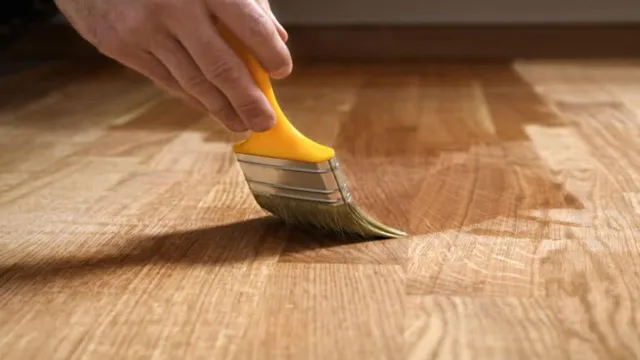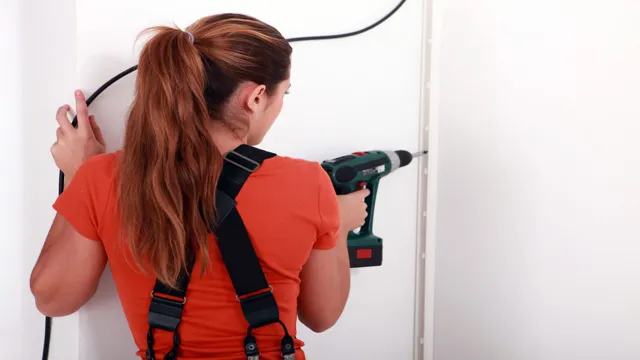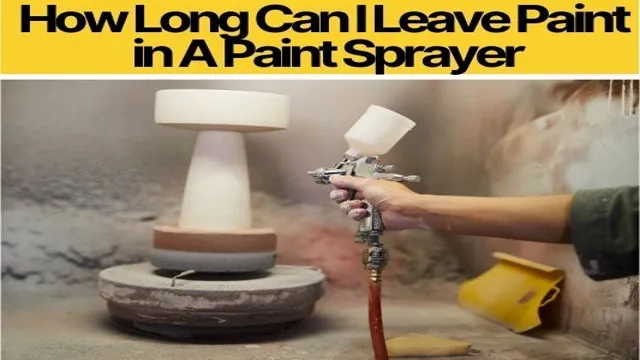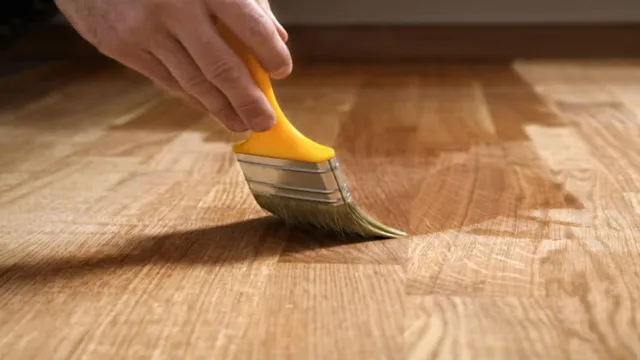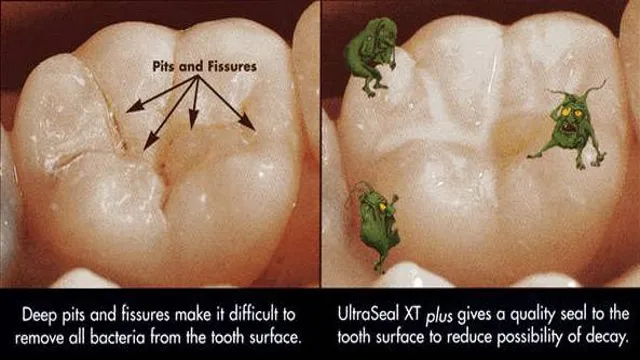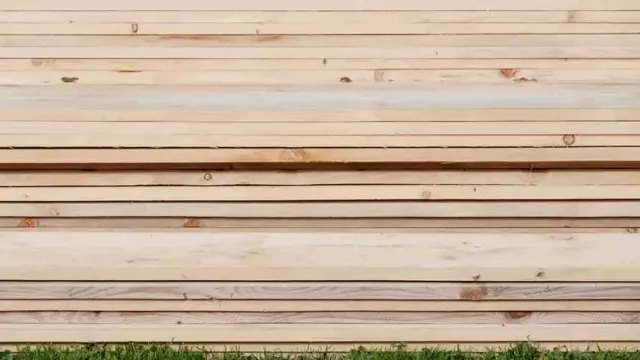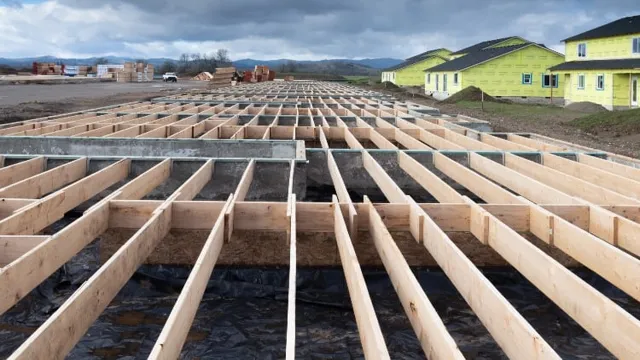How to Remove Stair Spindles Without Damaging: Step-by-Step Guide
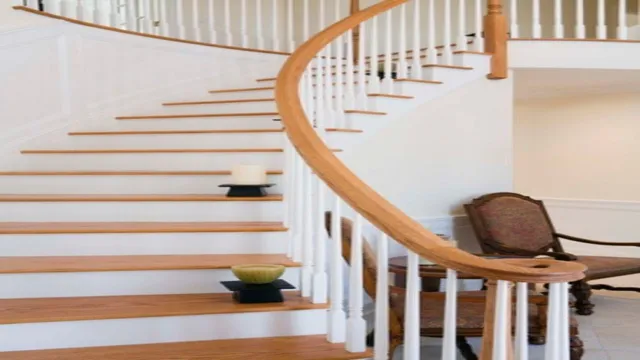
Have you ever looked at your stairwell and thought it needed an update? Perhaps your spindles are outdated or worn, but the thought of removing them without causing damage is daunting. Fear not, because removing stair spindles is easier than you may think. With the right tools and a little know-how, you can achieve a fresh new look for your stairway, without sacrificing the integrity of your existing structure.
In this guide, we’ll walk you through the steps for removing stair spindles without damage, so you can revamp your stairway with ease. So, grab your tools and let’s get started!
Tools You Will Need
If you’re looking to remove stair spindles without damaging your stairs, you’ll want to gather a few tools before starting the job. First, you’ll need a drill with a drill bit that’s slightly smaller than the diameter of the spindle. This will be used to drill a small hole in the center of the top of the spindle, allowing you to insert a screw or hook to pull the spindle out.
You’ll also need pliers or a wrench to grip and twist the spindle once it’s loosened. A hammer can be helpful for tapping the spindle out of place, but be sure to use it gently to avoid damaging your stair treads. Finally, a putty knife or pry bar can be handy for prying any remaining glue or adhesive off the stairs after the spindles are removed.
With these tools in hand, removing your stair spindles should be a breeze!
Drill and long drill bit
When it comes to drilling into hard surfaces, having the right tools is essential. For this task, you will need a drill and a long drill bit. These tools make it easier to bore deep holes into hard surfaces such as metal, wood, or concrete.
The drill helps turn the drill bit at high speed, while the long drill bit is capable of reaching deep into the material. Without these tools, drilling into hard surfaces can be difficult, if not impossible. However, with the right tools at your disposal, you can complete your drilling tasks quickly and with ease.
So, make sure you invest in a quality drill and long drill bit to ensure your drilling projects are a success.
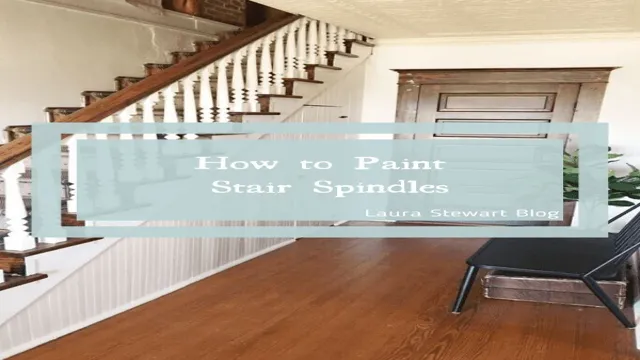
Pliers or vise grips
When it comes to repairing or building things, you need the right tools to get the job done. Two of the most commonly used tools are pliers and vise grips. Pliers are an essential tool for grasping or holding objects with their flat or serrated jaws.
They come in various sizes and shapes to suit different needs. On the other hand, vise grips also feature jaws that are adjustable and can be locked in place. They can be used for gripping, clamping, and even cutting objects.
While pliers are useful for delicate tasks such as bending wires, vise grips are ideal for more heavy-duty tasks like removing rusty bolts. Both tools are crucial and serve different purposes, so it’s necessary to have them in your toolbox. However, always ensure you choose the right tool for the job to avoid damaging your equipment.
Hammer and chisel
One of the most essential tools for any woodworking project that involves shaping and carving wood is the hammer and chisel. Having these two tools will allow you to work with precision and carve out intricate details and designs that will add charm and character to your creation. When selecting a hammer and chisel, you should consider the size, weight, and grip of the tools to ensure that they fit your hands comfortably.
The chisel should have a sharp and durable blade made of high-quality steel that can resist damage and stay sharp for a long time. Whether you are working on a small-scale project or a large-scale one, having a hammer and chisel is indispensable. So, invest in good-quality tools to get the job done right, and you’ll be pleasantly surprised by the final result.
Removing Old Spindles
If you’re looking to revamp your staircase, one of the first steps is usually removing the old spindles. However, you don’t want to damage the surrounding woodwork in the process. To remove stair spindles without damaging anything, you can start by loosening or removing any nails or screws holding the spindle in place.
Then, using a rubber mallet or a piece of scrap wood as a buffer, carefully tap the bottom of the spindle to loosen it from the baseplate. Once the spindle is loose, wiggle it back and forth while pulling up to remove it completely. If the spindle is particularly stubborn, you may need to use a saw or other cutting tool to carefully cut around the baseplate to free it from the surrounding woodwork.
But as long as you proceed with caution and take your time, removing old spindles should be a relatively straightforward task.
Locate the Baluster
Removing old spindles can be quite a daunting task, but it’s an essential part of a baluster replacement project. Before you can install new balusters, you need to remove the old ones. The first step is to locate the baluster by identifying the top and bottom attachments.
Once you have located the baluster, you can proceed with the removal process. This can be done by either cutting the spindle with a saw or by using a chisel and hammer to pry it out. It’s essential to be careful when removing the spindle to avoid damaging the surrounding area.
Ensuring that the top and bottom attachments are removed first will ensure that the spindle comes out easily without any complications. With this accomplished, you can now proceed to install a new baluster, which will give your staircase a fresh and modern look. Remember, safety is of utmost importance when working on your staircase, so take all necessary precautions and be patient in completing your project.
Mark the Baluster
When it comes to removing old spindles, it’s important to mark the baluster beforehand to ensure proper placement of the new ones. The baluster is the vertical component of a stairway railing system, and it’s crucial to get the spacing just right for both safety and aesthetic reasons. Before removing any spindles, take the time to mark the center of each baluster with a pencil or tape measure.
This will help you to line up the new spindles correctly and keep the railing looking uniform. By taking this careful approach to the task, you’ll be able to remove the old spindles and replace them with ease, creating a safe and stylish finished product.
Drill the Pilot Hole
If you’re looking to give your outdated interior a much-needed facelift, one great place to start is by removing old spindles and replacing them with sleek new ones. But before you can install those new spindles, you’ll need to drill the pilot hole. This process involves using a drill bit to create a small hole to guide the screw that will hold the new spindle in place.
To begin, you’ll want to remove the old spindle carefully. Depending on the age and condition of your current spindles, you may need to use a bit of elbow grease to get them out. Once you’ve removed the old spindle, grab your drill and select the appropriate drill bit to create your pilot hole.
The size of the pilot hole will depend on the size of your new spindle, so be sure to measure carefully. Place the drill bit at the center mark of where you want your new spindle and apply gentle pressure as you drill into the wood. Be sure to keep the drill level and straight so that your pilot hole comes out straight as well.
Once you’ve drilled your hole, use a screwdriver to gently screw in your new spindle. It should slide in smoothly and fit snugly into its new home. Remember, taking the time to drill a proper pilot hole is essential for ensuring that your new spindles stay securely in place.
With a little patience and attention to detail, you can upgrade your interior design in no time!
Loosen the Baluster
When it’s time to update your staircase, removing old spindles is a crucial step. But how do you loosen those stubborn balusters that have been holding tight for years? Here’s a helpful tip: start by identifying which balusters need to be removed. Once you’ve located them, use a pry bar to gently loosen the baluster from the railing and tread.
You may need to apply pressure in different directions to fully release it. If the baluster is still stuck, try using a rubber mallet to tap it loose. Remember to be patient and gentle to avoid damaging the surrounding area.
With a little bit of elbow grease and some persistence, you’ll have those old spindles out in no time, and your staircase will be ready for a fresh new look.
Remove the Baluster
Removing the baluster, also known as a spindle, can be a task that requires some elbow grease. Before beginning, it’s important to ensure that the area is safe and any necessary precautions are taken. To remove the old spindles, start by loosening the screws or nails that hold it in place.
If it is still firmly attached, try to wiggle it back and forth to loosen it up. Once it is loose, pull it out of the railing and discard it. It might be a good idea to keep a few extra spindles on hand in case any need to be replaced in the future.
It’s important to take care when removing the balusters, especially if they are old and fragile. Ensuring a safe and careful removal can help ensure a successful renovation project and a beautiful finished product.
Install New Spindles
If you’re looking to install new spindles on your stairs, you may be wondering how to remove the old ones without damaging the surrounding area. It’s important to approach this task with care to ensure a successful outcome. One effective way to remove stair spindles without causing damage is to use a pry bar or chisel to carefully loosen the spindle from its base.
Once it’s loose, you can gently rock it back and forth until it’s completely free. Be sure to keep an eye out for any glue or adhesive that may be holding the spindle in place, and use a solvent to dissolve it if necessary. With a little patience and attention to detail, you can remove your old stair spindles safely and successfully.
Then, the next step is to install your new spindles, which can really transform the look of your stairs. So, get started today and give your staircase a fresh new look!
Measure Spindle Length
When installing new spindles, one crucial step is to measure the spindle length accurately. Incorrect spindle length can cause the spindle to protrude too far or not far enough, leading to issues in the machine’s performance. To measure the spindle length, first remove the old spindle by loosening the clamps that hold it in place.
Then, using a ruler or caliper, measure the distance from the spindle’s base to the tip. This measurement will let you know the precise length needed for the new spindle. It’s essential to measure this before installing the new spindle to ensure optimal performance and avoid any issues down the line.
Taking the time to measure spindle length can save you time and money in the long run and keep your machine running smoothly.
Add Glue or Epoxy
When it comes to installing new spindles, one crucial step is to add glue or epoxy. This will help ensure that the spindle stays securely in place and won’t loosen over time. Glue and epoxy are great options for this as they provide a strong, durable bond.
However, it’s important to make sure that you choose the right glue or epoxy for the job. Look for a product that is specifically designed for wood and has a high level of strength. You’ll also want to make sure that you follow the manufacturer’s instructions carefully and apply the glue or epoxy evenly to avoid any air pockets.
By taking these steps, you can ensure a strong and stable installation of your new spindles, giving you peace of mind for years to come.
Insert and Secure the New Baluster
When it comes to installing new spindles for your baluster, the process can seem overwhelming at first. But once you break it down step by step, it’s a lot simpler than you might think. First, you’ll need to remove the old spindles and any leftover adhesive from the baluster.
Then, you can measure and cut your new spindles to the appropriate length. After that, it’s time to insert them into the baluster and secure them into place. Some people prefer to use a screw or nail to keep the spindles in place, while others opt for an adhesive.
Whichever method you choose, just make sure that the spindles are secure and held in place tightly. By taking the time to properly install your new spindles, you can ensure that your baluster looks great and is safe for years to come.
Finishing Touches
Removing stair spindles can be a daunting task, especially if you’re worried about damaging the surrounding woodwork. However, with a bit of caution and careful planning, it’s entirely possible to remove stair spindles without causing any harm. Before you get started, make sure you have the proper tools on hand, including a drill, saw, and pry bar.
Begin by cutting the spindle close to the bottom rail using a saw, then drill a hole through the center of the spindle remaining in the baluster. Insert a pry bar into the hole and gently work it back and forth until the spindle is loosened enough to remove by hand. If the spindle won’t come out cleanly, you may need to use a bit of force, but be sure to do so carefully to avoid damaging the surrounding woodwork.
With a bit of patience and care, you should be able to remove your stair spindles without causing any harm to the rest of your staircase.
Fill Holes with Putty
When it comes to home renovation or painting projects, it’s the little finishing touches that can make all the difference. One of those finishing touches is filling holes with putty. While it may seems like a small step, it’s actually quite important in achieving a smooth and flawless finished product.
Putty is typically used to fill in small holes, cracks, or gaps in the wall or surface you are painting. It’s a simple process that involves applying the putty with a putty knife, allowing it to dry, and then sanding it down to a smooth finish. The end result is a surface that is ready to be painted with no imperfections.
This may seem like a small detail, but the finished product will look significantly more professional, and you’ll be amazed at how much better your room looks without those unsightly holes or gaps. So don’t forget to fill those holes with putty before painting to achieve the perfect finish.
Sand the Area
“Sand the Area” Now that you’ve patched up the hole or filled in the crack, it’s time to sand the area for a smooth finish. Sandpaper comes in various grits, which determines how coarse or fine it is. If you’re sanding a relatively flat surface, use a sanding block to make sure you have even pressure throughout.
Start with a coarse grit sandpaper and gradually work your way up to a fine grit for a smooth and even finish. Be sure to wipe away any dust leftover from sanding with a damp cloth and let it dry completely before moving onto the next step. Sanding may take some time, but it’s worth it for a flawless end result that will make your repairs blend in seamlessly with the rest of the surface.
Paint or Stain the Balusters
Once you’ve installed your new balusters, it’s time to think about the finishing touches. One major decision you’ll need to make is whether to paint or stain the balusters. Both options have their pros and cons.
Paint provides a smooth, opaque finish that can match any color scheme, while stain allows the natural beauty of the wood grain to shine through. It’s important to consider your personal preferences and the overall aesthetic of your home when making this decision. If you’re unsure which option is right for you, consider asking a professional for advice.
They can provide guidance on color choices, durability, and maintenance. Ultimately, the decision to paint or stain comes down to your personal taste and the look you want to achieve for your home. So take your time, weigh your options, and choose the finish that best suits your style.
Conclusion
Removing stair spindles can be a daunting task, but with these simple steps, you can ensure a smooth and damage-free removal process. Remember to have the right tools on hand, take your time, and never force anything. With a bit of patience and finesse, you’ll have those pesky spindles out in no time! And who knows, you might just discover a hidden talent for staircase renovation.
So go forth, and spindle on!”
FAQs
What tools will I need to remove stair spindles without causing damage?
You will need a drill, pliers, a saw, a hammer, and a pry bar.
Can I remove stair spindles without removing the handrail?
Yes, it’s possible to remove spindles without removing the handrail by using an angle grinder or reciprocating saw.
How do I know if a spindle is glued in place?
If a spindle wiggles but won’t come out when you pull it with pliers, it may be glued in place. You can try using a hair dryer or heat gun to soften the glue before trying again.
How do I fill the holes left by removed spindles?
You can use wood filler or a dowel rod coated in wood glue to fill the holes. Sand and paint or stain to match the surrounding wood.
Can I reuse the removed spindles in another area of my home?
Yes, if the spindles are in good condition, they can be reused in another area or used to make a DIY project.
Is it necessary to replace all the spindles if only one or a few are damaged?
No, it’s possible to replace just the damaged spindles if you can find a match for the existing ones.
How long does it typically take to remove stair spindles?
The amount of time required depends on the number of spindles and the method used, but it typically takes a few hours to a full day.

